Gender gap in spatial abilities depends on females' role in society by John Timmer, on Nurture affects gender differences in spatial abilities, by M Hoffman, U Gneezy, & J.A. List. Two closely related tribes in Northeast India share many qualities but differ in one respect: one is patrilineal and the other is matrilineal. Three American researchers decided to see if they could use these research conditions to answer some questions about the innate biological differences between men and women. There couldn’t be a more perfect situation of isolated, biologically similar but culturally disparate polities. The first thing I thought of when I saw the article was, "They've found the perfect research situation."
1. Single salient characteristic, all other physical points being equal. To have two isolated groups of people who share lifestyle (stresses, labor patterns, etc.), diet, proximity, and genetics, yet primarily differ culturally, is a research designer's dream. Often you have to account for external factors that may cause you to conflate one effect for something else. In trying to answer a nature-vs.-nurture question like this, you want to get all your variables down to as discrete a level as possible. Unlike other studies that are deliberately taking into account multiple lines of evidence, from culture to economic status to physical behavior to diet, here we have a question that requires us to make sure culture is the only variant (alternatively, biology is the only variant, but that's not the case here).
2. Ability to analyze or account for variation within a population. To have multiple villages within these two (culturally) isolated groups, so as to get a decent sample size and intra-polity variation is fantastic. This means the researchers can better understand of how one group functions absent any expectations generated by their knowledge of the other group, because they can look at group of substantial size as a whole.
3. Decent sample size With 1,300 participants in the sample size, that's pretty good for statistical purposes, to contribute to the body of scientific work focusing on gender and reasoning. John Timmer is absolutely right when he says "abilities of the tribes in Northeast India are only ever going to provide a small snapshot of the full range of human diversity," because that's what science often is, the accretion of studies depositing their findings year after year until (ideally) a decent and more holistic understanding is born.
4. Objective, quantifiable test that does not rely on self-reporting. One of the things I always liked about archaeology was that all my research subjects were dead; much of any error came from us, because a 2.7 C/N ratio was a 2.7 C/N ratio, but only the researcher could decide whether a pelvic bone was remodeled enough to make the subject 45 years old rather than 25. One of the things I disliked about psychology (and some diet studies) was the reliance on human subject self-reporting. The ideal way to cut down on self-reporting or result-expectation errors is double or even triple blind design, where the research assistants don't even know what they're testing for. The test here doesn't have to worry about that; the only variable I can even think of is the incentive given that might influence what kinds of people you end up getting for the test, but I'm willing to gloss over that because of the sample size and the fragmentation of variables.
The researchers accounted for other cultural factors as well, such as education and property ownership, but my first reaction to hearing the research conditions was, "Jackpot!"


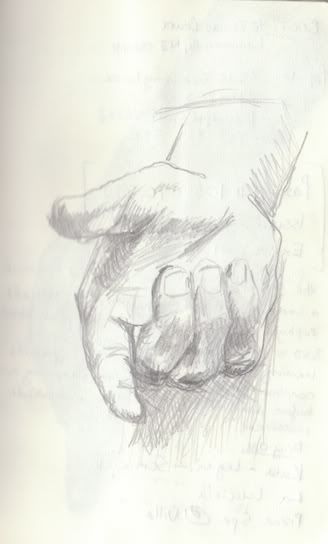
 Above, rice paddies in Bali.
Above, rice paddies in Bali.
 Above, an eagle from a painting in the Indianapolis Museum of Art.
Above, an eagle from a painting in the Indianapolis Museum of Art.
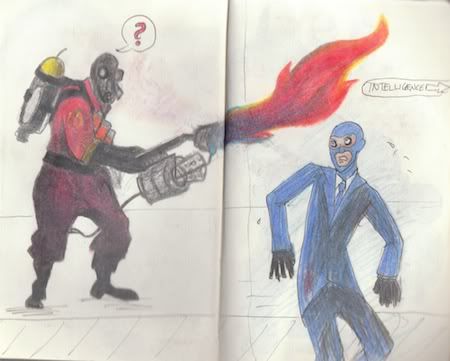
 These two above were practice sketches of Team Fortress 2 characters. I eventually drew a birthday card featuring the Pyro lighting the candles on a Portal cake.
These two above were practice sketches of Team Fortress 2 characters. I eventually drew a birthday card featuring the Pyro lighting the candles on a Portal cake.
 Above, a sculpture of two deer in the Indianapolis Museum of Art.
Above, a sculpture of two deer in the Indianapolis Museum of Art.
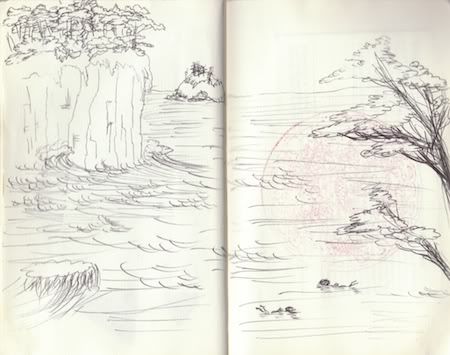 I sketched these above at a seaside restaurant overlooking cliffs at Jeju Island, South Korea.
I sketched these above at a seaside restaurant overlooking cliffs at Jeju Island, South Korea.
 Above, some Korean-style houses.
Above, some Korean-style houses.
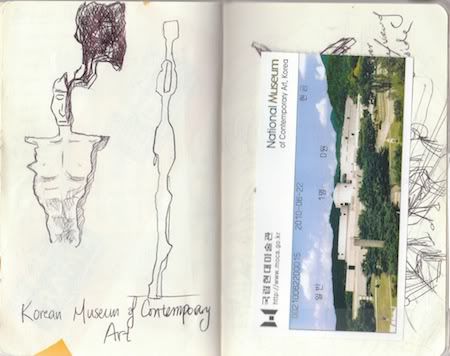
 An attempt to do a children's rendition of "What I Did On My Summer Vacation" for Bali.
An attempt to do a children's rendition of "What I Did On My Summer Vacation" for Bali.
 Musings about Insadong.
Musings about Insadong.




 "The Imaginarium of Doctor Parnassus" was playing on the flight to South Korea.
"The Imaginarium of Doctor Parnassus" was playing on the flight to South Korea.
 This is 'supposed' to be Robert Downey, Jr. from the film "Sherlock Holmes." I say "supposed to be."
This is 'supposed' to be Robert Downey, Jr. from the film "Sherlock Holmes." I say "supposed to be."

 The above boy's head is a riff off of James Jean, I believe.
The above boy's head is a riff off of James Jean, I believe.
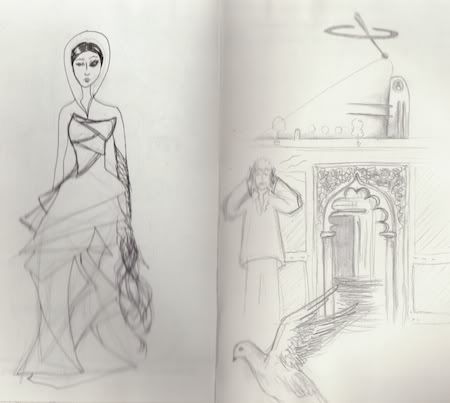







 (Above, some people I saw on the T. I loved the man's nose!)
(Above, some people I saw on the T. I loved the man's nose!)
 (Above, James Hacker, portrayed by Paul Eddington in Yes, Minister)
(Above, James Hacker, portrayed by Paul Eddington in Yes, Minister)





 (Above, one of my original characters, Adelice Kalani)
(Above, one of my original characters, Adelice Kalani)







 (Above, don't know why this scanned so badly, but it's the Seine.)
(Above, don't know why this scanned so badly, but it's the Seine.)



 (Above, from JLA Shogun of Steel)
(Above, from JLA Shogun of Steel)
 (Above, from
(Above, from  (Above, from
(Above, from 

 (Above left, Doctor Who in Charles Schulz style. Above right, from Nextwave)
(Above left, Doctor Who in Charles Schulz style. Above right, from Nextwave) (Above left, from
(Above left, from 




 Individual on the right is from another deviantart.com user's work, but I can't find it now. If you recognize it, please let me know and I will provide proper attribution.
Individual on the right is from another deviantart.com user's work, but I can't find it now. If you recognize it, please let me know and I will provide proper attribution. The lack of brush control in the ink Sakura Pigma Brush means I'm only ever going to use it for shading/inking. I much prefer my sumi brushes for actual painting work. Dur.
The lack of brush control in the ink Sakura Pigma Brush means I'm only ever going to use it for shading/inking. I much prefer my sumi brushes for actual painting work. Dur. It's starting to get hard to keep up, and to think of things to draw that aren't completely ridiculous. Whenever you see a comic book character, it means I'm being lazy.
It's starting to get hard to keep up, and to think of things to draw that aren't completely ridiculous. Whenever you see a comic book character, it means I'm being lazy.
